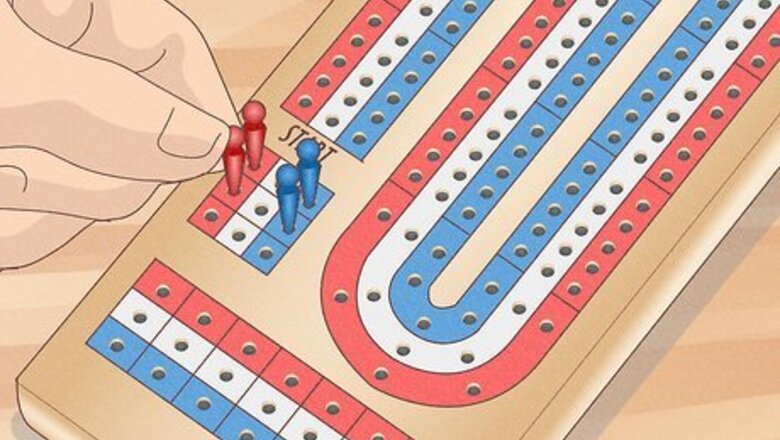
views
- Play with 2 players using a cribbage board with pegs and a standard 52-card deck.
- Take turns playing cards from your hand and adding the card values for the round. Score if you play a card that makes the total 15 or 31.
- Score points by having cards that total 15, making pairs or flushes, and creating runs of sequential cards. Move your pegs around the board to track your score.
- Win the game by being the first player to reach 121 points.
Setup
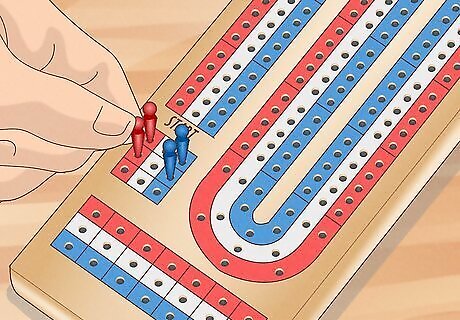
Place pegs in the starting positions on a cribbage board. Play cribbage with 2 players. Find the pegs underneath the board in a small storage slot. Take 2 pegs of the same color and put them at the start of the track so one is in front of the other. Have the other player put their pegs at the start of a different track. Most cribbage boards have 2 or 3 tracks. It doesn’t matter which track you choose as long as both of your pegs are in the same one. The cribbage board is just a way to visually keep track of the score. If you don’t have a board at home, you can track your score with pen and paper.
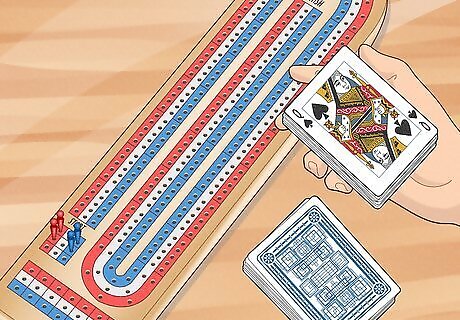
Cut a deck of cards to choose the first dealer. Shuffle a standard deck of 52 cards and set it on the table. Take turns cutting the cards and revealing the bottom card of the section you picked up. Whoever has the card with the lowest value becomes the dealer and the other player becomes the “pone.” Kings are the highest-value cards and aces have the lowest value. If you both cut the same card value, shuffle the deck and cut them again.
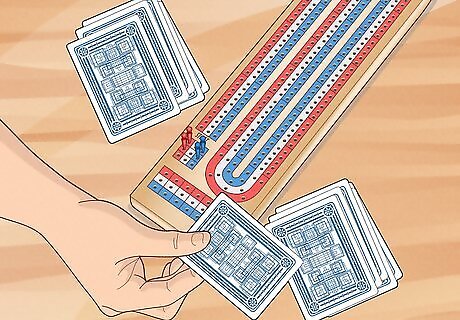
Shuffle and deal 6 cards to each player. Thoroughly mix the cards by shuffling them 2–3 times. Deal 1 card at a time starting with the pone. Once both players have 6 cards, set the rest of the deck next to the board. You can look at your own cards, but keep them hidden from the other player so they don’t know what’s in your hand.
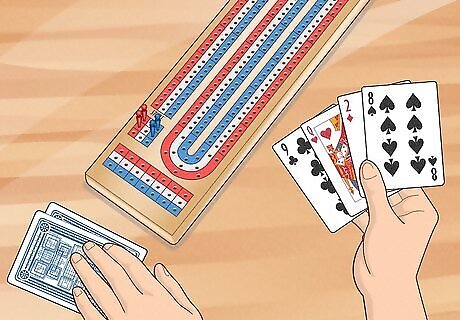
Discard 2 cards from your hand into the dealer’s crib. Look through your hand and choose 2 cards that you don’t want to keep in your hand. Set those cards face-down in front of the dealer to form their “crib,” which is an extra hand that’s hidden and scored at the end of the round. Keep the 4 leftover cards in your hand. You score points at the end of the round for pairs, runs, and sets of cards that total 15 in your hand. Try to keep cards that will score points in your hand.

Cut the deck and flip the start card. Let the pone player cut the deck, and reveal the top card on the lower portion of the deck as the “start card.” Set the start card on the top of the deck face-up so both players can see it. Both players can use the start card to make combos and score points with their hands at the end of the round. If the start card is a jack, the dealer immediately scores 2 points, known as “his heels.” Move the peg furthest back on your track that many spaces ahead of the front peg.
Playing a Round
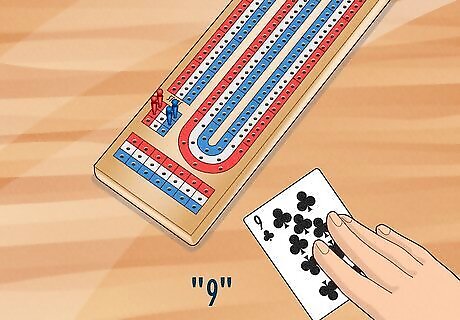
Play a card face-up and announce the point value. If you’re the pone player, take the first turn of the game. Choose one of the cards from your hand and set it down in front of you. Clearly state the value of the card to start the “count” for the round. Face cards have a value of 10 and aces have a value of 1.
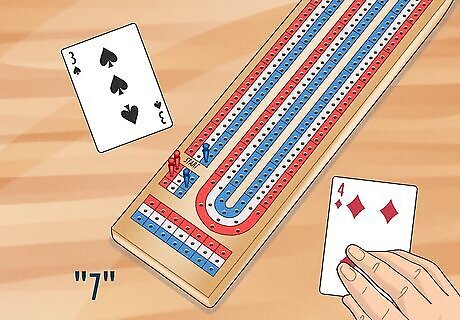
Take turns playing cards and adding to the total point value. After playing a card, add its value to the running total from the rest of the cards played. Keep your cards in a separate pile from the other player so they don’t get mixed up. Slightly overlap your cards so you can see what you’ve already played. Continue alternating turns for the rest of the round. Example: If your opponent starts with a 3 and you play a 4 on your turn, you would say “7” as the new total. Only the values of the cards matter during this part of the game, so you don’t have to worry about the suits.
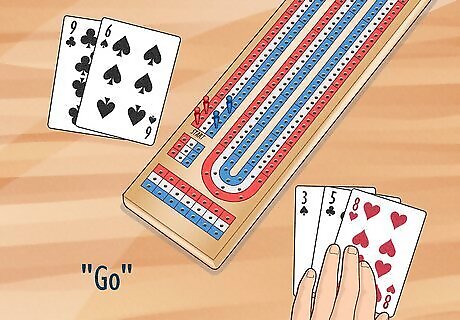
Say “go” instead of playing a card if it puts the total over 31. If you’re not able to play a card without going over the limit of 31 points, tell the other player “go” to signal you’re out for the current count. If they still have cards they can legally play, they must play as many of the cards as they can. If you played the last card closest to 31, then score 1 point. If any player still has cards, flip the cards that have been played face-down and start the count over at 0. Continue taking turns starting with the player who said “go.”
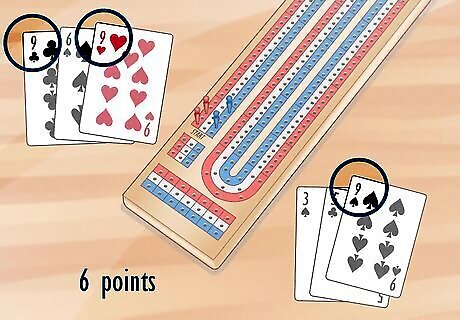
Earn points by making card combos. Watch what cards your opponent plays and pay attention to the count to get extra “pegging” points. Whenever you score points, take the peg of your color that’s furthest back and move it ahead of the one that’s in front. That way, players can see the last amount that you scored. When a played card brings the count exactly to 15, score 2 points. If the last card played makes the total count 31, score 2 points. If you make a pair by matching the last card your opponent played, get 2 points. If your opponent has another matching card, they’ll earn 6 points. If you are able to play the 4th card of the same value, you move forward 12 points! If the card you play completes a sequential run of cards, earn 1 point for each card in the run, no matter what order the cards were played in. For example, if you played a 4 on your turn and your opponent played a 2 on their turn, you could play a 3 to earn 3 points. If you play the last card for the round, gain 1 point.
Scoring Hands

Spread your hand out in front of you face-up. If you flipped any cards face-down during the round, flip them face-up again so the other player can see them. Make sure the value and suit are visible for each card so the other player can ensure that you’re counting all of your points correctly. If you’re the dealer, keep your crib face-down for now.

Earn points for card combos made with your hand and the start card. Count the points for the pone player first. Start by looking for all the combinations of cards that total 15 before looking for pairs and runs of 3 or more sequential cards. Finally, check if all 4 cards in your hand are of the same suit to earn points for a flush. The point values for each combo are: Cards totaling 15: 2 points Pair: 2 points 3-of-a-kind: 6 points (since it counts as 3 separate pairs) 4-of-a-kind: 12 points (since it counts as 6 separate pairs) Run: 1 point for each card Flush: 4 points Flush plus start card in the same suit: 5 points Jack that’s the same suit as the start card (nobs): 1 point

Count the points in your hand and crib if you’re the dealer. After you finish counting the points in your regular hand, set them aside and flip the cards in your crib face-up. Count the points you earned from your crib, using the start card to make combos if you’re able to. Move your peg forward on the track to mark how many points you earned. You cannot earn a flush from your crib unless the cards also match the suit of the start card.
Winning the Game
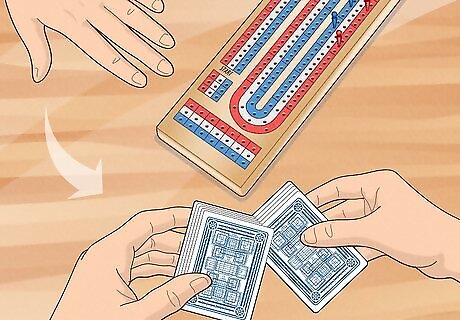
Switch dealers after each round. Collect all the cards and give them to the pone player so they become the new dealer. This round, they’ll have the crib so each player earns points from the same number of hands.
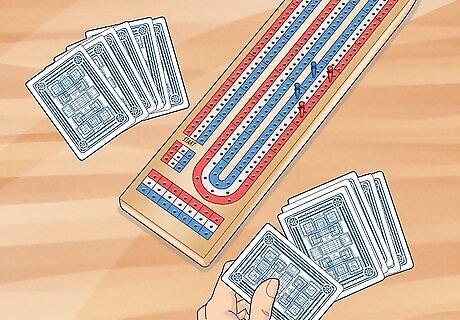
Shuffle and deal out new hands to start the next round. Put all the cards face-down and shuffle them a few times to ensure they’re thoroughly mixed. Deal out another hand of 6 cards and select which ones you want to add to the crib.
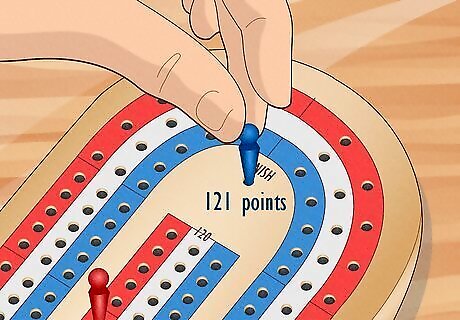
Win the game if you reach or go over 121 points. Keep playing rounds and alternating dealers until someone crosses the 121 mark on their track. You don’t have to land on 121 points exactly, so it’s okay if you score more points than you need. Whether you scored the points from pegging or by counting your hand at the end of the round, you win as soon as you cross the finish line. If you want to play a shorter game, only play until someone earns 61 points instead. If you won and the other player earned between 61–90 points, they’re considered “skunked.” If the other player has 60 points or fewer, they’re considered “double skunked.”
Variations

Score points your opponent missed with the “muggins” rule. If your opponent ever forgets to count any points in their hand or while they’re pegging, announce “muggins” out loud. Note how many points the other player missed and move ahead that many points on your track so you can get ahead. Take a little extra time looking over your hand when you play this variation so you don’t lose any points to your opponent.
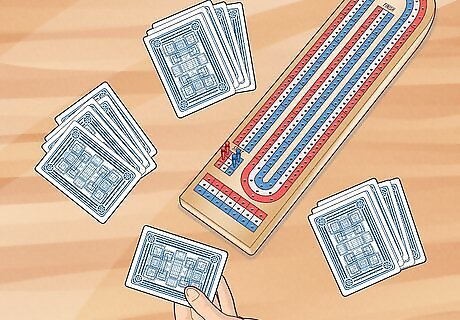
Start a game with 3 people by dealing 5 cards per hand and 1 to the crib. Use a cribbage board that has 3 tracks so you can each play. Instead of 6 cards, deal out 5 cards to each player. After dealing out the last card to their hand, the dealer adds the top card of the deck to their crib. Each player only has to discard 1 card from their hand. The person to the left of the dealer is the pone player, so they will cut the cards and take the first turn of each round.
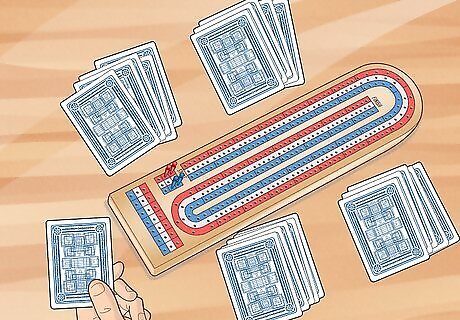
Play with 4 players by splitting into teams of two. Sit across from your teammate and use the same pegs as them. Deal out 5 cards to each player so each person only needs to discard 1 to the crib. Whenever either teammate earns points, move the pegs on their track forward. It’s not allowed to communicate what cards you have to your teammate.
Strategy
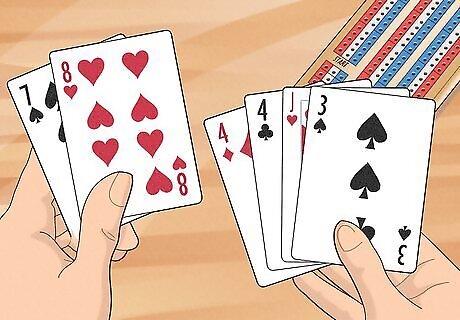
Add sequential cards to your crib if you’re the dealer. Since the crib is an extra chance for you to earn points as the dealer, set yourself up to earn as many points as you can. Since cards that are in sequential order have the best opportunity of forming a run, try to keep them together in your crib. Just avoid breaking up a high-scoring hand if you already have one. Putting a 7 & 8 or a 2 & 3 in your crib are both great options since you have a chance at a run and making a total of 15.
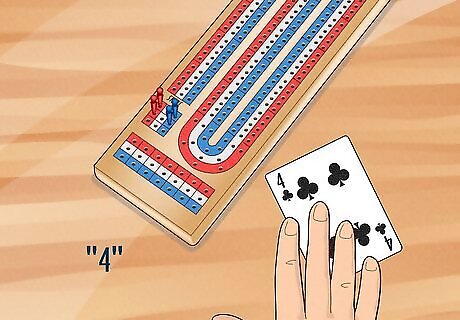
Lead with a 4 as the first card if you’re able to. Try to avoid starting the count with a 5 or higher since the other player could easily play 1 more card to make it a total of 15. Instead, stick with a lower card to open up the round so your opponent is less likely to earn points from pegging. Save aces and 2s for later in the round so you have a better chance at hitting 31 and earning points.
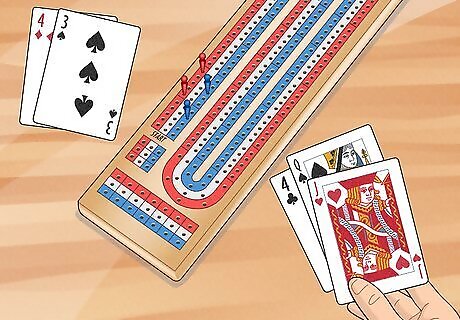
Play your high-value cards earlier in the round. It’s tougher to play higher-valued cards later in the game since you can’t go over 31, so saving them may give your opponent extra points from a “go.” After the lead card, try to ditch your higher cards right away so you don’t get stuck with them at the end of the round.
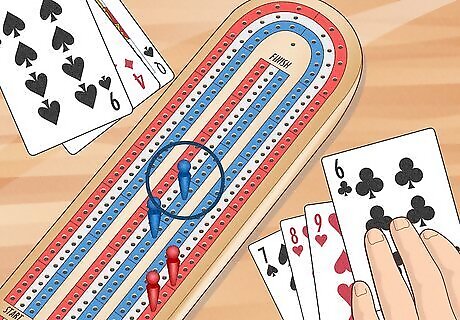
Focus on earning points if you have the lead. If you’ve got a pretty substantial lead over your opponent, don’t worry about what cards you put in their crib if it helps you score more points. That way, you can keep getting ahead on the track even if it gives your opponent an extra point or two.

















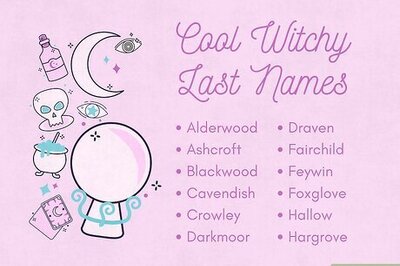

Comments
0 comment